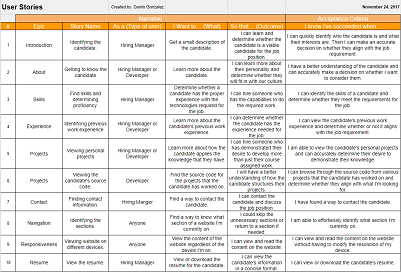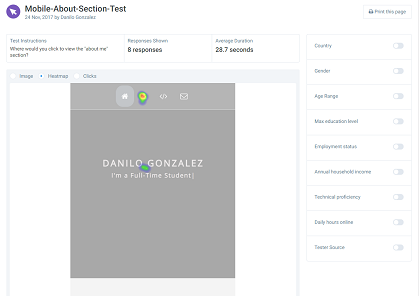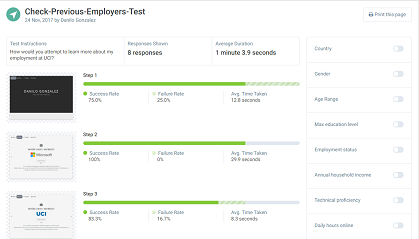User Research
User Interviews
The User Interviews allowed me to interview potential users for my website. I mainly wanted to interview hiring managers and developers. After all, those two would be the individuals looking at my portfolio. I had to opportunity to interview two software developers. I mainly focused on asking them about what they expect to see from an online portfolio. This allowed me to have a good understanding about what people within the industry expect to see in a portfolio.
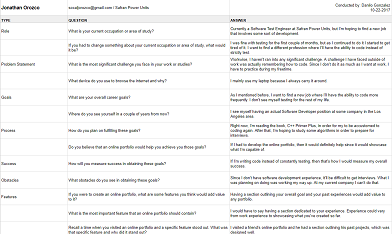
Click on the image to view the document.
Competitor Analysis
The Competitor Analysis allowed me to inspect other websites to see their strengths and weaknesses. I evaluated three different portfolios from prospective software engineers. I chose these mainly because I aspire to become a software engineer. For each one, I analyzed and wrote down their strengths and weaknesses. By doing this, I avoided incorporating any weaknesses that the competitors had. I also attempted to incorporate some of the strengths that the competitors had. This allowed me improve my portfolio compared to others.
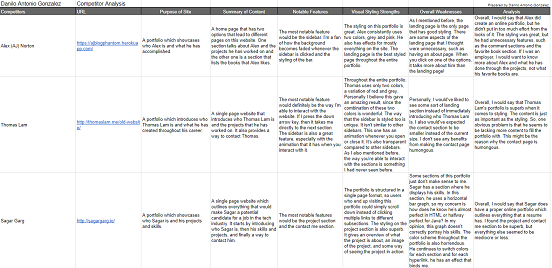
Click on the image to view the document.
Feature Value Matrix
The Feature Value Matrix allowed me to outline every feature that I wanted to incorporate in my portfolio. I selected several features that every portfolio should contain. The features that I selected were created from the feedback that I had received from the user interviews. I also included unique features such as particles.js and a slideshow view. This allowed me to have an idea of what I needed to implement for my portfolio.
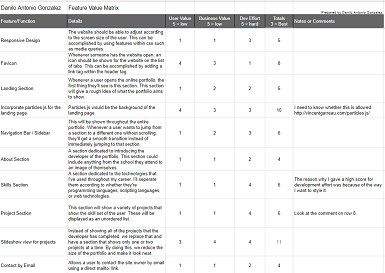
Click on the image to view the document.
Feature Prioritization
The Feature Prioritization helped me visualize what features had to be prioritized. Every feature was given a number for their user, business, and dev value. The combination of these three determined their priority. During development, the features that had high priority were implemented first. A Linear Model and Kano Model were created in order to see the prioritizations.

Click on the image to view the powerpoint.
